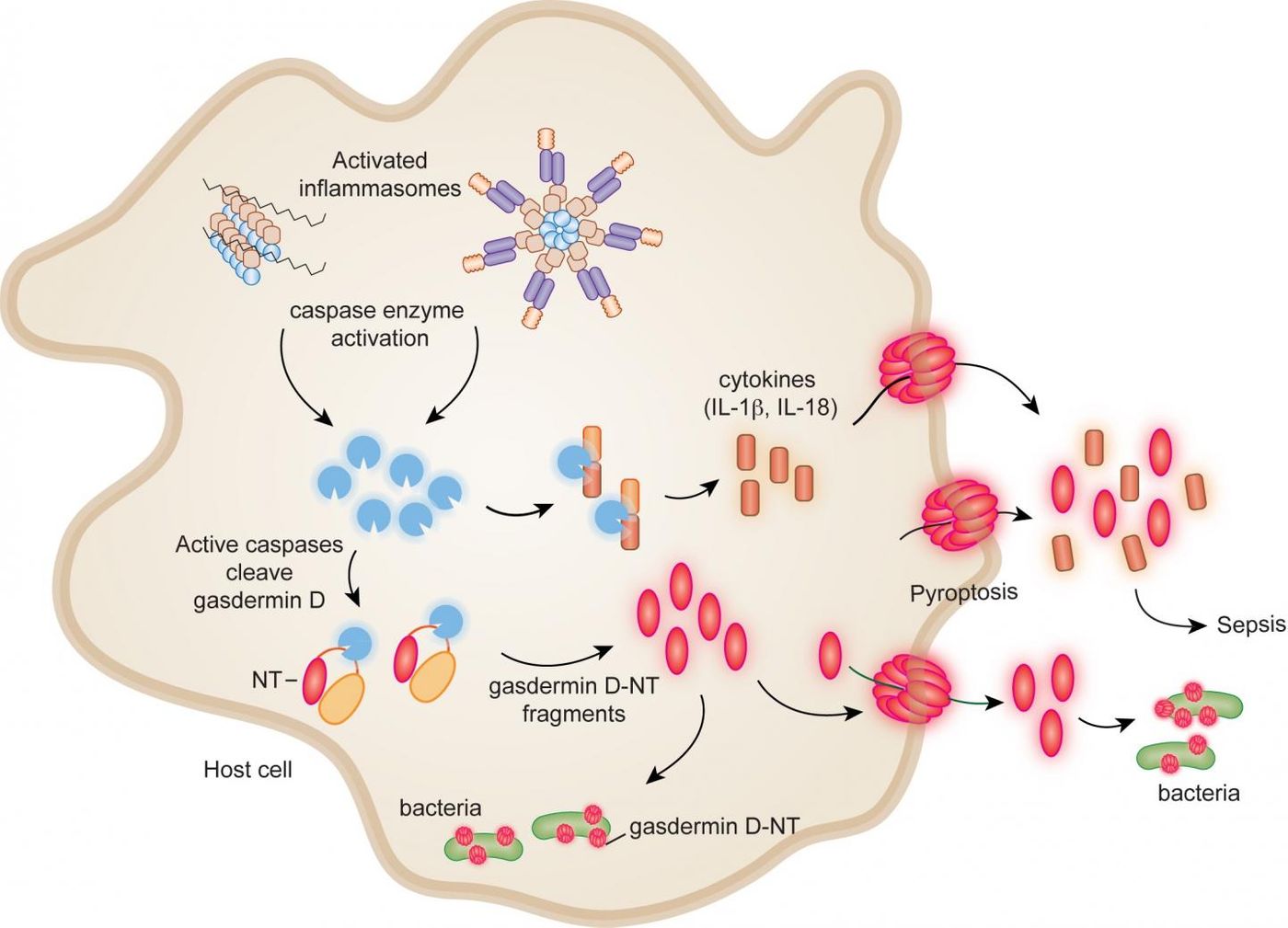Antibiotic resistance continues to be a rising concern in public health. Sepsis, the last resort of the immune system, is a failure in the battle against infection that just ends up being lethal itself.
Reporting in Nature, a group of researchers at Boston Children's Program in Cellular and Molecular Medicine (PCMM) propose a new strategy for controlling not only sepsis but also the severe bacterial infections that cause it. They have identified a protein fragment that can kill bacteria, but not uninfected host cells. That same fragment could potentially be inactivated to combat sepsis.
When chemicals that are fighting an immune infection trigger inflammatory responses throughout the body, called sepsis, multiple organs systems can be damaged and then fail. Progressing further into septic shock, blood pressure drops dramatically and death can result. Sepsis is the leading cause of death for newborns and children worldwide, and kills a quarter million people each year in the U.S. There is not any good treatment for it, like antibiotic-resistant infections.
Recent work has shown that a bacterial invasion triggers the activation of protein complexes called inflammasomes. That then starts a process called pyroptosis; infected cells explode, thus releasing bacteria along with chemical signals act as an immune alarm. But a balance must be maintained; if the response is too strong sepsis can occur, causing organ damage that can be fatal.
"The immune system is trying like hell to control the infection, but if the bacteria win out, the immune response can kill the patient," explains Judy Lieberman, who was senior investigator of the new report with Hao Wu. "Most attempts to quiet the immune response haven't worked in treating sepsis in the clinic, because the parts that trigger it haven't been well understood."
Researchers know that activated inflammasomes turn on enzymes called caspases that cleave a molecule called gasdermin D. This cut releases the active fragment of gasdermin D's active fragment, called gasdermin-D-NT. But what was unknown was how that causes pyroptosis.
Lieberman, Wu and their team now demonstrate that gasdermin-D-NT works in two ways. It penetrates the membranes of the infectious bacteria and kills them. It also perforates the membrane of the host cell, causing pyroptosis; the cell is then killed, releasing bacteria and sounding the immune alarm. They also learned that uninfected cells nearby remain unscathed.
Interestingly, the team also discovered that gasdermin-D-NT kills bacteria outside of cells directly, including Listeria, E. coli, S. aureusa. In the lab it happened within only five minutes.
These results must be replicated in animal models of infection and sepsis, but Lieberman thinks that gasdermin-D-NT works could have the potential to be harnessed for treating deadly bacterial infections.
"Because of widespread antibiotic resistance, we have to think about other strategies," says Lieberman. "Since the fragment kills bacteria but not uninfected host cells, one can imagine injecting the fragment directly, especially to treat a localized infection involving antibiotic-resistant bacteria."
For treating sepsis, Lieberman suggests inhibiting gasdermin-D-NT is a therapeutic target, and it might be blocked with antibodies or otherwise targeting caspase enzymes.
The video above explains what sepsis is as well as recently updated clincal criteria for diagnosing it, from the Journal of the American Medical Assosication.
Sources:
AAAS/Eurekalert! via
Boston Children's Hospital,
Nature










